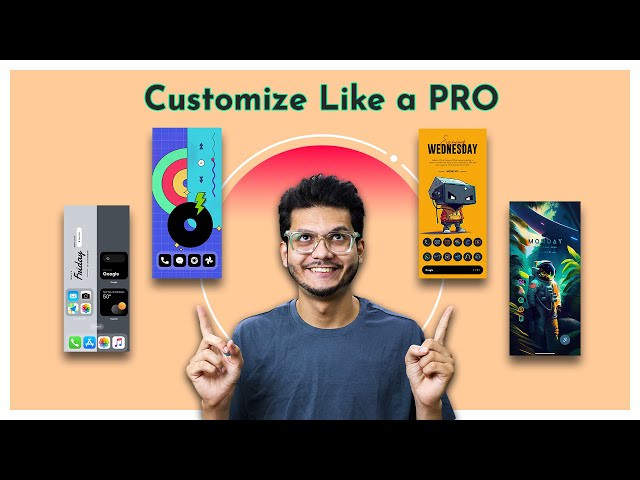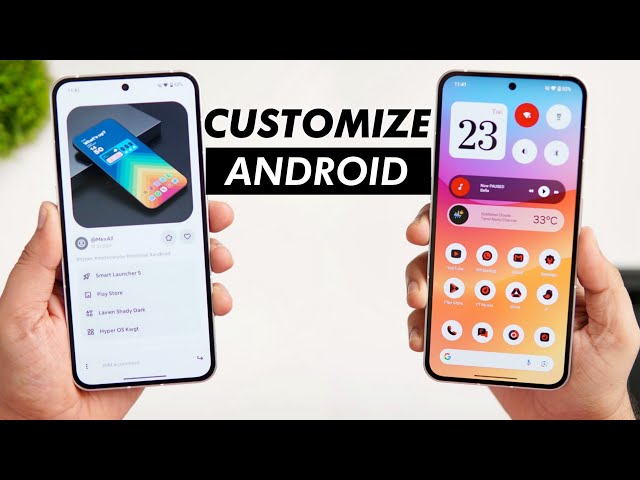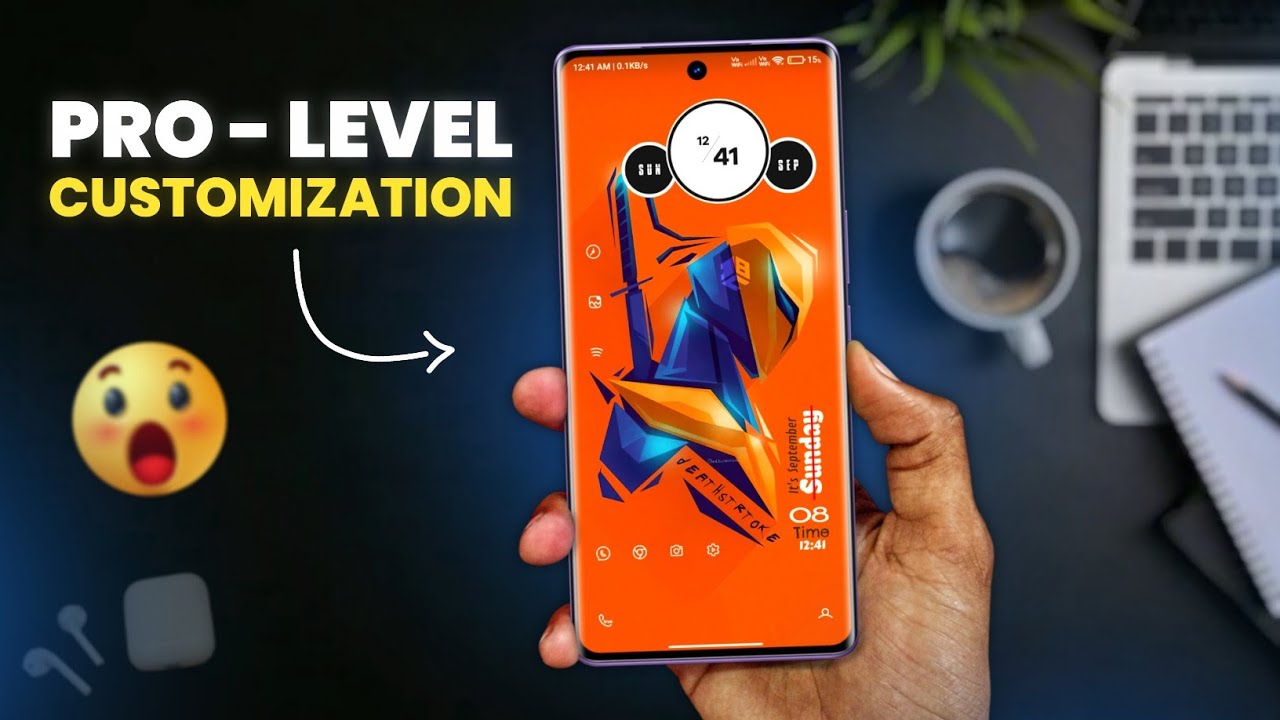Introduction
Custom widgets are an excellent way to personalisepersonalise your Android device, giving you quick access to information and apps that matter most to you. With a variety of customisationcustomisation options available, you can create widgets that not only serve functional purposes but also enhance the aesthetics of your home screen. This guide will walk you through the process of creating custom widgets for a personalisedpersonalised Android experience, ensuring that your device is as unique as you are.
What Are Android Widgets?
Widgets are mini-applications that run on your Android home screen. They provide quick access to information or functionality without the need to open an app. Examples include weather widgets, music players, and calendar displays. Custom widgets take this a step further by allowing you to design and configure them to suit your personal style and needs.
Why createcreate customcustom widgetswidgets?
Creating custom widgets allows you to tailor your device to your specific preferences. Whether you want a minimalist clock, a detailed weather report, or a task list, custom widgets provide the flexibility to design your home screen just the way you want it. Plus, they can improve your productivity by putting essential information right at your fingertips.
Tools You Need to Create Custom Widgets
- KWGT Kustom Widget Maker: One of the most popular apps for creating custom widgets. It offers a wide range of design options, allowing you to create everything from simple clocks to complex information displays.
- Zooper Widget: Another powerful tool for widget customisationcustomisation, offering a drag-and-drop interface that’s user-friendly for beginners.
- UCCW (Ultimate Custom Widget): Known for its simplicity and ease of use, UCCW lets you create basic widgets with less of a learning curve.
- Icon Packs and Graphic Elements: To enhance the visual appeal of your widgets, you might want to install icon packs or graphic elements from the Google Play Store or websites like DeviantArt.
Step-by-Step Guide to Creating Custom Widgets
1. installinstall the necessarynecessary tools.tools.
Before you begin creating custom widgets, install the tools mentioned above. KWGT is highly recommended for its versatility and robust features.
2. Choose the widgetwidget type.type.
Decide what type of widget you want to create. Common options include clocks, weather widgets, music controls, and calendar widgets. Knowing what you want to create will guide your design choices.
3. Select a Template or Start from Scratch
Many widget creation apps like KWGT offer pre-made templates. These can be a great starting point, especially if you’re new to widget customization. You can choose a template that closely matches your vision and then tweak it to fit your preferences. If you’re feeling adventurous, you can start from scratch and build your widget from the ground up.
4. CustomiseCustomise the layoutlayout and designdesign
This is where the fun begins! Use the app’s interface to adjust the layout, font style, colourscolours, and other design elements. You can add elements such as text, images, shapes, and progress bars. The key is to experiment and adjust until you find a design that you love.
- Font and Text: Choose a font that complements your overall home screen aesthetic. Make sure the text is legible and appropriately sized.
- Colours: Pick colors that match your wallpaper or theme. Some apps allow you to set gradients or add transparency to elements.
- Size and Positioning: Adjust the size and position of each element to ensure a balanced and visually appealing widget.
5. Add Functional Elements
Widgets aren’t just about looks; they need to be functional too. You can add elements like weather updates, battery percentage, music controls, and even shortcuts to apps. KWGT, for instance, allows you to pull in data from various sources, like RSS feeds, to keep your widgets dynamic.
6. Save and Add to Your Home Screen
Once you’re satisfied with your custom widget, save your design and add it to your home screen. Most apps will guide you through this process, allowing you to place your new widget wherever you like on your screen.
7. Adjust and fine-tune
After placing the widget on your home screen, you might find that it needs some tweaking. Maybe the text isn’t as legible as you thought, or the colours don’t pop the way you wanted. Don’t worry—just go back into the app, make your adjustments, and re-save.
Advanced Tips for Widget Customisation
- Use Transparent Backgrounds: Transparent widgets can create a clean and minimalist look that blends seamlessly with your wallpaper.
- Incorporate Animated Elements: Some apps allow you to add animations to your widgets. This can make your home screen feel more dynamic and alive.
- Leverage Google Calendar and Task Integration: For productivity, consider integrating Google Calendar or task management apps like Todoist into your widgets.
- Create Interactive Widgets: Some advanced apps allow you to create widgets that respond to taps, launching apps, or changing displays based on your input.
Common Challenges and Solutions
- Compatibility Issues: Some widget creation apps might not be fully compatible with certain Android versions. Always check the app’s compatibility before installing.
- Learning Curve: Apps like KWGT offer a lot of customisation, which can be overwhelming at first. Start with simple designs and gradually explore more complex options as you become comfortable with the interface.
- Battery Drain: Complex widgets with constant data updates or animations can drain your battery faster. If you notice a significant battery drain, consider simplifying your widget or adjusting the update frequency.
Key Takeaways
- Custom widgets are a powerful way to personalise your Android device, making it both functional and visually appealing.
- Tools like KWGT and UCCW offer extensive customisation options, allowing you to create widgets that match your style and needs.
- Start with pre-made templates if you’re new to widget creation, and gradually explore more advanced customisation options.
- Remember to balance aesthetics with functionality, ensuring your widgets not only look great but also serve a practical purpose.
- Keep experimenting with different designs and functions to find the perfect setup for your home screen.
Conclusion
Creating custom widgets is a fantastic way to make your Android device truly your own. Whether you’re looking to improve your productivity, enhance the aesthetics of your home screen, or simply have fun with design, the possibilities are endless. With the tools and tips provided in this guide, you’re well on your way to mastering the art of widget customisation.
Take the time to experiment with different tools and designs until you find what works best for you. The more you explore, the more you’ll discover about the endless possibilities of Android customization. By following this guide, you can ensure that your home screen is not just another Android interface but a reflection of your unique personality and style.



